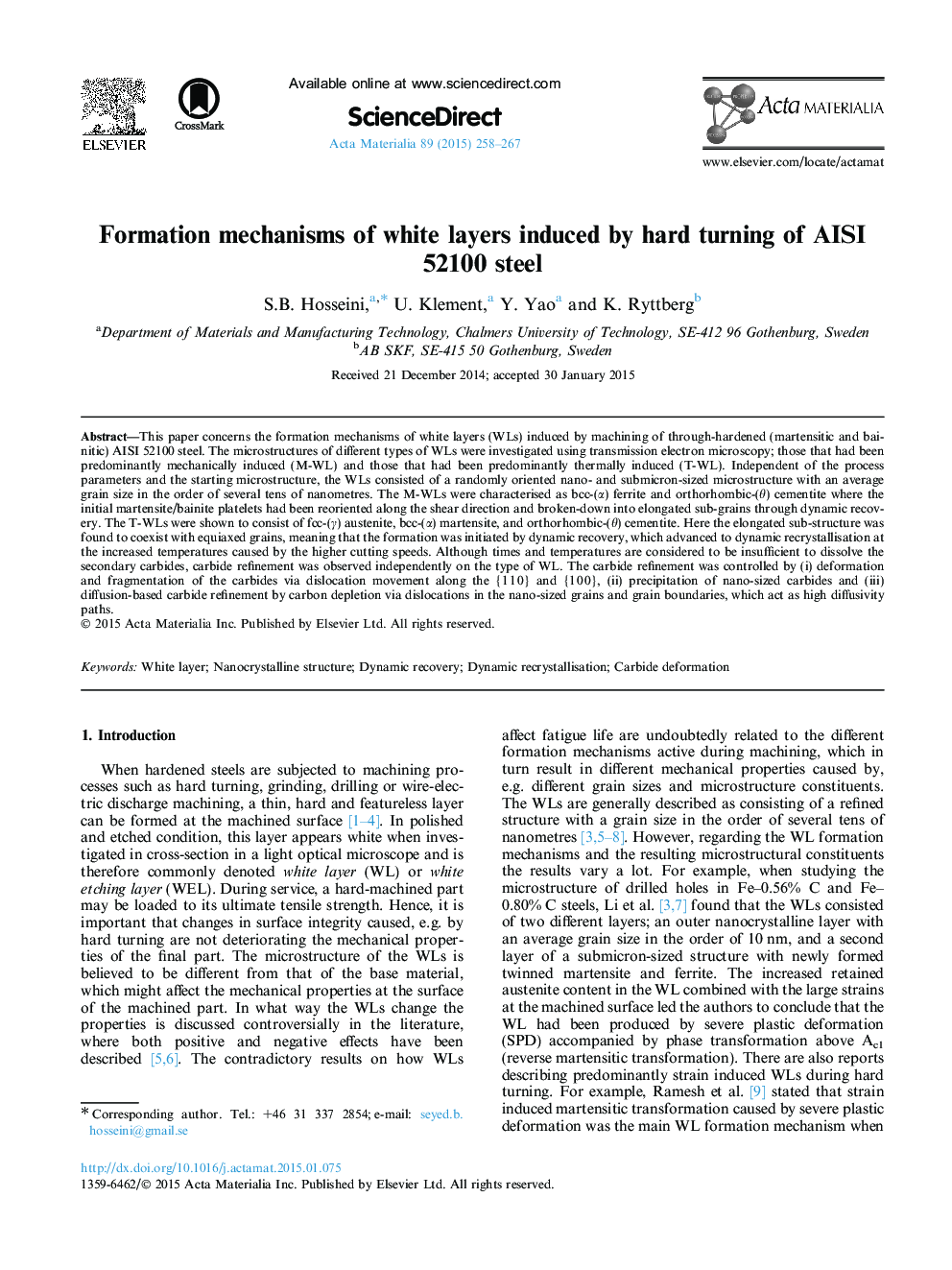| کد مقاله | کد نشریه | سال انتشار | مقاله انگلیسی | نسخه تمام متن |
|---|---|---|---|---|
| 7880295 | 1509587 | 2015 | 10 صفحه PDF | دانلود رایگان |
عنوان انگلیسی مقاله ISI
Formation mechanisms of white layers induced by hard turning of AISI 52100 steel
دانلود مقاله + سفارش ترجمه
دانلود مقاله ISI انگلیسی
رایگان برای ایرانیان
کلمات کلیدی
موضوعات مرتبط
مهندسی و علوم پایه
مهندسی مواد
سرامیک و کامپوزیت
پیش نمایش صفحه اول مقاله

چکیده انگلیسی
This paper concerns the formation mechanisms of white layers (WLs) induced by machining of through-hardened (martensitic and bainitic) AISI 52100 steel. The microstructures of different types of WLs were investigated using transmission electron microscopy; those that had been predominantly mechanically induced (M-WL) and those that had been predominantly thermally induced (T-WL). Independent of the process parameters and the starting microstructure, the WLs consisted of a randomly oriented nano- and submicron-sized microstructure with an average grain size in the order of several tens of nanometres. The M-WLs were characterised as bcc-(α) ferrite and orthorhombic-(θ) cementite where the initial martensite/bainite platelets had been reoriented along the shear direction and broken-down into elongated sub-grains through dynamic recovery. The T-WLs were shown to consist of fcc-(γ) austenite, bcc-(α) martensite, and orthorhombic-(θ) cementite. Here the elongated sub-structure was found to coexist with equiaxed grains, meaning that the formation was initiated by dynamic recovery, which advanced to dynamic recrystallisation at the increased temperatures caused by the higher cutting speeds. Although times and temperatures are considered to be insufficient to dissolve the secondary carbides, carbide refinement was observed independently on the type of WL. The carbide refinement was controlled by (i) deformation and fragmentation of the carbides via dislocation movement along the {1 1 0} and {1 0 0}, (ii) precipitation of nano-sized carbides and (iii) diffusion-based carbide refinement by carbon depletion via dislocations in the nano-sized grains and grain boundaries, which act as high diffusivity paths.
ناشر
Database: Elsevier - ScienceDirect (ساینس دایرکت)
Journal: Acta Materialia - Volume 89, 1 May 2015, Pages 258-267
Journal: Acta Materialia - Volume 89, 1 May 2015, Pages 258-267
نویسندگان
S.B. Hosseini, U. Klement, Y. Yao, K. Ryttberg,